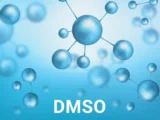Updated on 15. November 2021 from ÁYIO-Q Redaktion
Reading time: approx. 10 minutes
Vitamin D is both a nutrient that we take in with meals and a hormone produced naturally in the body. We have known for a long time that the fat-soluble vitamin plays a central role in the absorption (uptake) of calcium and phosphorus in the intestine. Both minerals are important for bone formation. As a typical example of the importance of vitamin D, the bone disease rickets, which was widespread among babies and small children at the beginning of the 20th century, is mentioned again and again.
Older readers will certainly remember the penetrating taste of cod liver oil, which our parents gave us by the spoonful in childhood. Since cod liver oil contains large amounts of vitamin A and omega-3 fatty acids as well as vitamin D, this measure served to prevent rickets.
Many organs and tissues of the human body have receptors (docking sites) for vitamin D. This fact suggests important functions that go far beyond bone health.
Vitamin D – what is it anyway?
Biochemists use the term vitamin D to describe a certain family of fat-soluble substances. The most important representative for us is cholecalciferol (vitamin D3). If you look at it closely, the term vitamin is not correct in connection with this group of molecules. According to the definition, vitamins are vital micronutrients that our body cannot produce itself. We therefore have to take them in with our food.1
With vitamin D, things are different: like almost all vertebrates, humans also have the possibility to produce the valuable biomolecule in the skin. For this, we need the help of the sun. This is why vitamin D is popularly known as the sun vitamin. UV-B radiation ensures that vitamin D3 is formed in the outer layer of the skin (epidermis) from a derivative of cholesterol (7-dehydrocholesterol).
Another special feature distinguishes vitamin D from all other known vitamins: As a hormone, its biologically active form (Calcitriol) performs numerous tasks in our organism:
Vitamin D
- is involved in the development of the brain and nervous system,2,3
- supports bone and muscle development,4
- controls over 1000 genes in the human organism,5
- has a great influence on our immune system,6,7
- has an antiviral effect and is used to prevent colds and flu,8,9
- has anti-inflammatory and antioxidant properties,10
- regulates the composition of the bacterial colonisation (microbiome) in the intestine.11
What is the daily requirement of vitamin D?
In 2018, the German Nutrition Society (DGE) published the current reference values for nutrient intake. According to these, adults and children need at least 800 International Units (IU) and 20 micrograms (µg) of vitamin D daily, respectively. For infants up to one year of age, the DGE estimates the required amount at 400 IU (10 µg).12
When is there an undersupply or a vitamin D deficiency?
When vitamin D3 is formed in the skin or supplied through food, the vital biomolecule immediately reaches the liver. There it is converted into the stable intermediate 25(OH)D (calcifediol, 25-hydroxy vitamin D), which serves as a storage form of vitamin D. When needed, our organism converts this molecule into the hormone calcitriol.
Since the blood level of 25(OH)D does not change in the short term but remains constant over a longer period of time, it is well suited for determining the vitamin D content in the body. The 25(OH)D concentration is given in nanograms per millilitre (ng/ml) or nanomoles per litre (nmol/l).
Evaluation of 25(OH)D levels in blood serum13
- Severe deficiency: less than 7 ng/ml (17.5 nmol/l)
- Deficiency: below 20 ng/ml (under 50 nmol/l)
- Insufficiency: 20 – 29 ng/ml (50 – 72.5 nmol/l)
- Normal values: 30 – 59 ng/ml (75 – 147.5 nmol/l)
- High values: 60 – 89 ng/ml (150 – 222.5 nmol/l)
- Oversupply: 90 – 149 ng/ml (225 – 372.5 nmol/l)
- Vitamin D poisoning: over 150 ng/ml (over 375 nmol/l)
In the results, doctors do not distinguish between adults, children or gender.
Vitamin D3 production with the help of solar radiation
Sunbathing is the best way to cover your daily vitamin D requirements. Just 10 to 15 minutes in the blazing sun are enough for our body to produce more than 1,000 IU of vitamin D3 itself. However, this only applies to spring and summer. American researchers at the Boston University Medical School discovered that in Central Europe (52nd latitude, Berlin) there is almost no self-production of vitamin D in the months from October to March. The power of the sun is not sufficient for this.14,15
Rule of thumb
If your shadow on the flat ground is smaller than your height, vitamin D3 production occurs in the uncovered skin. In Central Europe, this condition is mainly found from the beginning of April to the end of September between 10 am and 2 pm. For fair skin types, it is sufficient to expose the arms, legs and face to the sun several times a week for 10 to 15 minutes each time.
A sunscreen must not be applied during this short sunbath. This is because UV-B rays no longer penetrate the skin from a sun protection factor of 14. According to Professor Dr. Nicolai Worm, the skin of a young adult can produce between 10,000 and 20,000 IU of vitamin D3 within 15 to 30 minutes under optimal conditions and full-body sunbathing.16
It is important to completely fill up the vitamin D stores in the fatty tissue during the spring and summer months. Otherwise, there is a risk of vitamin D deficiency during the winter period.
What to do if reddening of the skin or sunburn occurs?
Many adults and children who are rarely exposed to the sun without protection react sensitively at first: the skin quickly turns red and the first signs of sunburn appear. In this case, the affected person has been in the sun too long. Wait a few days until the redness has subsided and start irradiating the arms, legs and face for three or four minutes.
Over time, your skin gets used to the ultraviolet radiation and you can extend sunbathing up to 15 minutes. This application time only applies to fair-skinned Central and Northern Europeans. Mediterranean types and people with darker skin need to spend 30 to 60 minutes in the sun to achieve the same effect.
Can the vitamin D requirement be met through food?
Some animal and plant foods are suitable sources of vitamin D for humans. However, there is a crucial difference: vitamin D3 is found in meat, fish and animal products, while plants contain vitamin D2 (ergocalciferol). Since our body can convert both forms into each other, they were considered equivalent for a long time. In 1998, a Canadian research team from the University of Toronto proved that our organism utilises vitamin D3 much better than vitamin D2.17
Foods with the highest content of vitamin D18
| Foods | Vitamin D per 100 gram |
| Cod liver oil | 13,200 IU (330 µg) |
| Eel, smoked | 3600 IE (90 µg) |
| Kipper | 1200 IE (30 µg) |
| Herring, Atlantic | 1000 IE (25 µg) |
| Trout | 880 IE (22 µg) |
| Salmon | 652 IE (16.3 µg) |
| Sardine | 440 IE (11 µg) |
| Tuna | 180 IE (4.5 µg) |
| Mackerel | 160 IE (4 µg) |
| Porcini mushrooms | 124 IE (3.1 µg) |
| Processed cheese 45 % fat in dry matter | 124 IE (3.1 µg) |
| Chicken eggs | 116 IE (2.9 µg) |
| Champignons | 76 IE (1.9 µg) |
| Beef liver | 68 IE (1.7 µg) |
From the table you can see that only fatty fish contain larger amounts of vitamin D. If you do not eat trout, herring, kippers or smoked eel every day, you will not reach the recommended daily amount of 800 IU with food alone. Nevertheless, it is worth eating fish several times a week, especially in the winter months.
What is the current supply of vitamin D in Germany?
In 2008, the Federal Ministry of Food, Agriculture and Consumer Protection published the results of the National Consumption Study II. According to this study, eight out of ten men and nine out of ten women in Germany do not reach the recommended reference value of 800 IU per day.19
The situation is no better for infants, children and adolescents. According to a statement by the Nutrition Commission of the German Society for Paediatrics and Adolescent Medicine (DGKJ)the average vitamin D level of girls aged 11 to 13 is 13.7 ng/ml. Boys from 14 to 17 have a 25(OH)D level in their blood of 14.2 ng/ml on average. Both correspond to a vitamin D deficiency! Although infants and toddlers in Germany receive a vitamin D supplement to prevent rickets, the 25(OH)D levels of 23 ng/ml (girls from 0 to 2 years) and 24.5 ng/ml (boys from 0 to 2 years) are in the undersupply range.20
These alarming figures show that adults and children in Germany spend far too little time in the sun in summer without sun protection. Certainly, the fear of sunburn and skin cancer is related to this. The only alternative is to eat fatty fish frequently and take a vitamin D3 supplement. According to the US Department of Health (National Institutes of Health, NIH), the long-term vitamin D intake of children nine years and older and adults should not exceed an average of 4,000 IU per day.21
However, this amount is not sufficient to eliminate an undersupply or deficiency. A group of researchers from the Pure North S’Energy Foundation in Calgary, Canada, and the Boston University Medical Center found that normal-weight people need at least 6,000 IU of vitamin D3 daily to bring 25(OH)D levels back into the normal range. For overweight and obesity, as much as 7,000 and 8,000 IU a day, respectively, are needed.22
Permanent vitamin D deficiency has serious health consequences
Numerous scientific research studies prove a connection between a deficit of vitamin D and the risk of chronic diseases. These include above all:
- bone softening (rickets, osteomalacia),23
- Osteoporosis and related fractures,24
- Sleep disorders,25
- hay fever, allergy and asthma,8,26,27
- Cardiovascular diseases,28
- Arteriosclerosis and hypertension,29,30
- diabetes mellitus type 2,31
- Dementia and Alzheimer’s,32,33
- depression, anxiety disorders.34,35
The 2019 meta-analysis by Italian researchers shows a link between vitamin D deficiency and the development of autoimmune diseases such as systemic lupus erythematosus (SLE), the thyroid diseases Hashimoto’s thyroiditis and Graves’ disease, type 1 diabetes, multiple sclerosis, iridocyclitis, Crohn’s disease, ulcerative colitis, psoriasis vulgaris, rheumatoid arthritis and inflammatory soft tissue rheumatism (Polymyalgia rheumatica).36
Summary
Due to its enormous importance for humans, a sufficient supply of vitamin D is the key to health and well-being into old age. With a 25(OH)D value between 40 and 60 ng/ml, you are always on the safe side. Whether you achieve this through sunbathing, diet or a vitamin D supplement is irrelevant.
Important: The 25(OH)D level should not fall into the range of undersupply or vitamin D deficiency (less than 30 ng/ml) at any time in life.
It is best to have your 25(OH)D level in the blood determined twice a year (at the beginning of September and the beginning of March) by your family doctor, or you can buy a self-test for home use at the pharmacy or on the internet. This test also serves as a check if a food supplement with vitamin D is used.
Sources:
[1] Vitamine, auf https://www.chemie.de, Access date 02.10.2021
[2] Ko P et al. Maternal Vitamin D3 Deprivation and the Regulation of Apoptosis and Cell Cycle During Rat Brain Development. Brain Res Dev Brain Res. 2004 Oct 15;153(1):61-8.
[3] Garcion E et al. New Clues About Vitamin D Functions in the Nervous System. Trends Endocrinol Metab. 2002 Apr;13(3):100-5.
[4] Bouillon R et l. Skeletal and Extraskeletal Actions of Vitamin D: Current Evidence and Outstanding Questions. Endocr Rev. 2019 Aug 1;40(4):1109-1151.
[5] Carlberg C. Vitamin D: A Micronutrient Regulating Genes. Curr Pharm Des. 2019;25(15):1740-1746.
[6] Aranow C. Vitamin D and the Immune System. J Investig Med. 2011 Aug; 59(6):881–886.
[7] University of Edinburgh. Vitamin D study sheds light on immune system effects. ScienceDaily. ScienceDaily, 17 April 2019.
[8] Mailhot G, White JH. Vitamin D and Immunity in Infants and Children. Nutrients. 2020 Apr 27;12(5):1233.
[9] Grant WB et al. Evidence that Vitamin D Supplementation Could Reduce Risk of Influenza and COVID-19 Infections and Deaths. Nutrients. 2020 Apr 2;12(4):988.
[10] Almeida Moreira Leal LK et al. Vitamin D (VD3) antioxidative and anti-inflammatory activities: Peripheral and central effects. Eur J Pharmacol. 2020 Jul 15;879:173099.
[11] Ooi JH et al. Vitamin D Regulates the Gut Microbiome and Protects Mice from Dextran Sodium Sulfate–Induced Colitis. J Nutr. 2013 Oct; 143(10): 1679–1686.
[12] Vitamin D (calciferols), at https://www.dge.de, Access date 02.10.2021
[13] Kipshoven C. Cross-sectional study to estimate the vitamin D status in the population in Germany (DEVID study). Dissertation University of Cologne 2010; page 34.
[14] Religi A et al. Estimation of exposure durations for vitamin D production and sunburn risk in Switzerland. Journal of Exposure Science & Environmental Epidemiology. 2019 Nov 7; 29(10):742-752.
[15] Webb AR et al. Influence of season and latitude on the cutaneous synthesis of vitamin D3: exposure to winter sunlight in Boston and Edmonton will not promote vitamin D3 synthesis in human skin. J Clin Endocrinol Metab. 1988 Aug;67(2):373-8.
[16] Vitamin D Das Hormon der Streithähne, auf https://www.pharmazeutische-zeitung.de, Access date 02.10.2021
[17] Trang HM et al. Evidence that vitamin D3 increases serum 25-hydroxyvitamin D more efficiently than does vitamin D2. Am J Clin Nutr. 1998 Oct;68(4):854-8.
[18] Lebensmittel Vitamin D, auf http://www.vitalstoff-lexikon.de, Access date 02.10.2021
[19] Max Rubner Institute. Results Report Part 2 National Nutrition Survey II. 2008: Tab. A. 37, page 248.
[20] Wabitsch M et al. Vitamin D supply in infancy, childhood and adolescence. Monatsschrift Kinderheilkunde 2011;159(8):766-74.
[21] Vitamin D Fact Sheet for Health Professionals, at https://ods.od.nih.gov, Access date 02.10.2021
[22] Kimball SM et al. Evaluation of vitamin D3 intakes up to 15,000 international units/day and serum 25-hydroxyvitamin D concentrations up to 300 nmol/L on calcium metabolism in a community setting. Dermatoendocrinol. 2017 Apr 13;9(1):e1300213.
[23] Uday S, Högler W. Nutritional rickets & osteomalacia: A practical approach to management. Indian J Med Res. 2020 Oct;152(4):356-367.
[24] Lips P, van Schoor NM. The effect of vitamin D on bone and osteoporosis. Best Pract Res Clin Endocrinol Metab. 2011 Aug;25(4):585-91.
[25] Gao Q et al. The Association Between Vitamin D Deficiency and Sleep Disorders: A Systematic Review and Meta-Analysis. Nutrients. 2018 Oct 1;10(10):1395.
[26] Matsui T et al. Food allergy is linked to season of birth, sun exposure, and vitamin D deficiency. Allergol Int. 2019 Apr;68(2):172-177.
[27] Douros K et al. Does Vitamin D Deficiency Epidemic Parallel with Allergy and Asthma Epidemic? Mini Rev Med Chem. 2015;15(12):967-73.
[28] Rai V, Agrawal DK. Role of Vitamin D in Cardiovascular Diseases. Endocrinol Metab Clin North Am. 2017 Dec;46(4):1039-1059.
[29] Menezes AR et al. Vitamin D and atherosclerosis. Curr Opin Cardiol. 2014 Nov;29(6):571-7.
[30] Lin L et al. Vitamin D and Vitamin D Receptor: New Insights in the Treatment of Hypertension. Curr Protein Pept Sci. 2019;20(10):984-995.
[31] Lips P et al. Vitamin D and type 2 diabetes. J Steroid Biochem Mol Biol. 2017 Oct;173:280-285.
[32] Littlejohns TJ et al. Vitamin D and the risk of dementia and Alzheimer disease. Neurology. 2014 Sep 2;83(10):920-8.
[33] Sommer I et al. Vitamin D deficiency as a risk factor for dementia: a systematic review and meta-analysis. BMC Geriatr. 2017 Jan 13;17(1):16.
[34] Bičíková M et al. Vitamin D in anxiety and affective disorders. Physiol Res. 2015;64(Suppl 2):S101-3.
[35] Fallah M et al. Is Vitamin D Status Associated with Depression, Anxiety and Sleep Quality in Pregnancy: A Systematic Review. Adv Biomed Res. 2020 Jul 27;9:32.
[36] Murdaca G et al. Emerging role of vitamin D in autoimmune diseases: An update on evidence and therapeutic implications. Autoimmun Rev. 2019 Sep;18(9):102350.















